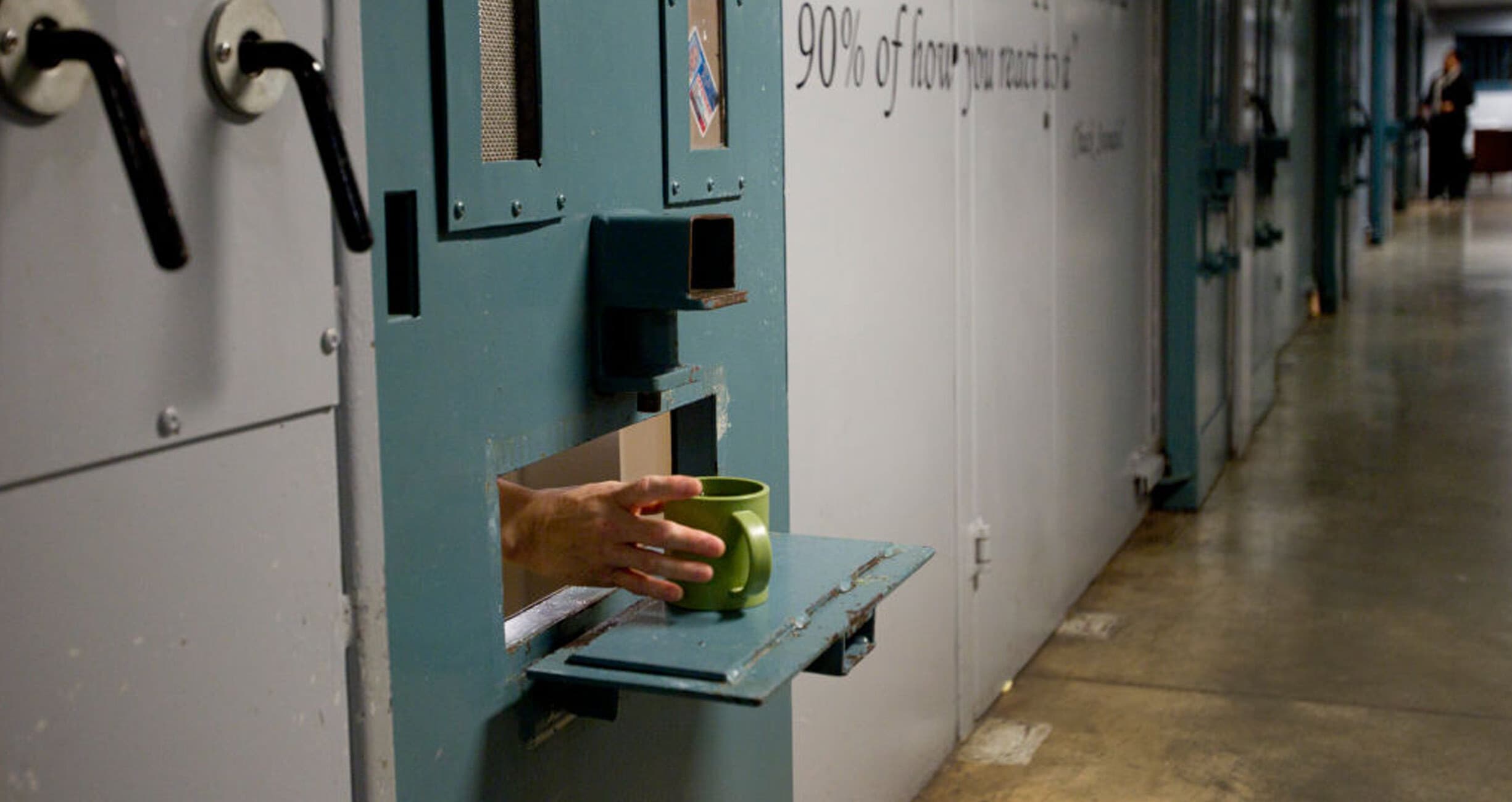“Lockdown” is an Epidemic Plaguing U.S. Prisons
Confining people to cells 23 hours a day is cruel and counterproductive, especially when we know what really makes prisons safer.

The sounds of a prison under lockdown still haunt Jerome Wright. Confined to their cells for nearly 24 hours a day, he and the people incarcerated with him might not have been able to see each other’s suffering, but they could hear it.
“It is just a cacophonous sound, all day and half the night,” said Wright, who spent 30 years in prison. “There is constant banging and kicking on the bars. If you are in the wrong cell, you don’t even know if it is night or day because there are no windows.”
When a prison goes into lockdown, the people incarcerated there are confined to their cells—which are typically the size of a parking spot—at nearly all times. They are denied access to the education, recreation, exercise, and other programming they might otherwise have. Sometimes only single units go into lockdown; sometimes it’s an entire prison. Lockdowns can last days, weeks, or longer. With correctional staffing shortages, lockdown has become standard in far too many prisons.
With little to no opportunity for any productive activity, people must find creative ways to pass the time. Wright said he played chess with a person locked a few cells away, shouting moves down the hallway. He also found solace in reading or writing, but access to books is strictly regulated and very limited in prison, and an estimated 30 percent of people who are incarcerated lack basic literacy. “If a guy can’t read or write, what is he going to do sitting in a cell for three days?” he asked.
Lockdowns are intended to be reserved for safety emergencies or to prevent the spread of violence. But in prisons nationwide, they are no longer a “rare action taken in a crisis,” as reported by The New York Times. Instead, they “are becoming a common way to deal with chronic staffing and budget shortages.”
The dangers of isolation under lockdown are well documented. Horror stories proliferate around the country as extended lockdowns lead to filthy conditions, degraded mental and physical health, and family separation. More than 40 percent of people in state prisons have a history of mental health conditions, which are exacerbated by the enforced idleness and isolation of solitary confinement. The National Alliance on Mental Illness warns that long-term solitary confinement can leave people with mental illnesses “unable to function in correctional facilities and unprepared to successfully reenter communities after their release.”
Solitary confinement is also known to increase the risk of suicide and self-harm. “I have seen people harm themselves to get themselves out of that cell and be taken somewhere else,” said Wright. “People go into prison and come out worse because of things like lockdown and solitary.”
This treatment is cruel and does not promote safety inside or outside of prisons. Research shows that solitary confinement can result in greater misconduct in prisons and increase a person’s odds of returning to prison after release. Although 94 percent of people incarcerated in state prisons will return home one day, too many prisons subject people to dangerous, traumatic experiences that often leave them worse off than they were before incarceration. Extended lockdown is part of the problem.
Humane living conditions and access to opportunities for engagement and skill-building make prisons safer for the people who live and work there. When prisons are built around a culture of accountability, restorative practice, and healing, violence decreases. Vera’s Restoring Promise initiative has redesigned prison and jail units in a number of facilities across five states so that they more closely reflect life on the outside. Former cells are converted to community spaces for learning, meditation, and conflict resolution. People in the units follow a daily schedule and have mentors to help them prepare for a healthy return to their communities. These changes have had transformative results. A study conducted by Vera, funded by the National Institute of Justice, found that living in a Restoring Promise unit decreased young adults’ odds of being convicted of a violent infraction or experiencing a stay in solitary confinement by 73 percent and 83 percent, respectively. People who participate in postsecondary education in prison also have as much as 48 percent lower odds of returning to prison than those who do not participate. When people have opportunities to participate in meaningful activities, they are better prepared to return to society as our neighbors.
Confining people to cells 23 hours a day is cruel and counterproductive. Investing in opportunities for incarcerated people to grow and gain skills that will help them break the cycle of incarceration will mean safer prisons and a safer society.
